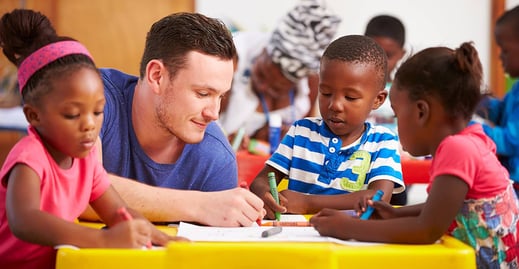
My children were lucky enough to have schoolteachers who, among many things, managed their classroom beautifully. Donna and Deanna were an amazing team! While I would shriek “Don’t step on the ice,” as my children slipped yet again into our teeny fish pond (no worries—it wasn’t deep), clear expectations—stated positively—just rolled off Donna and Deanna’s tongues as naturally as sunshine. And so I made a study of how they talked, and while I still might occasionally say things like “Don’t kick your sister!” here’s what I learned:
Say how you want children to behave before any problem behavior occurs
Here are some examples:
- "We’re all going to be very quiet and use two-finger touches when Ellie’s mom comes in with their new kitty." (That actually didn’t go so well; that orange fluff ball was way too cute to resist petting with both hands!
- "When we walk to the park, hold onto the rope."
- "Everyone will have a five-minute turn at the computers. When your five minutes is up, tap the friend who is next on the list so she can have a turn."
Use simple language
Here are some examples:
- "Put all the blocks back in the box when you’re finished playing."
- "Before we have snack, please wash your hands."
- "Everyone find a place on the rug where you can see Miss Donna and the book."
Keep it positive
Here are some examples:
- "Let’s walk on our quietest feet down the hall so we don’t wake up the little ones!"
- "Ask your friend if you can have the toy and wait till he says yes before you play with it."
- "We’re going to paint with shaving cream. Keep the cream on the table and use your hands to explore it."
Following these tips supports children’s positive behaviors, minimizes any potentially problematic behaviors, and helps children regulate their own behavior (the ultimate goal).

